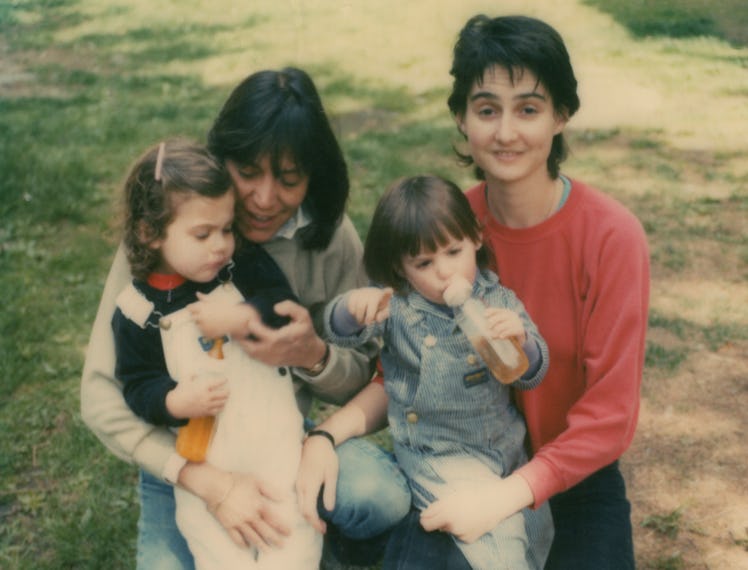Nuclear Family Blows Up the Loopholes in Our Legal System

Welcome to W TV Club, in which W magazine’s editors choose a television show they’d recommend you binge-watch. Our November picks will be a selection of docuseries. This week, culture editor Brooke Marine recommends Nuclear Family, a series about the legal battle that nearly destroyed filmmaker Ry Russo-Young’s family when she was a child.
Ry Russo-Young—the filmmaker known for her direction of book-to-film adaptations Before I Fall and The Sun Is Also a Star and her appearances in mumblecore classics Hannah Takes the Stairs and The Color Wheel—brings viewers on an intimate journey into her childhood with her HBO Max docuseries Nuclear Family. As the title suggests, Russo-Young comes from a generally conventional family, the only real “difference” being that she grew up with two lesbian moms. Featured prominently in the documentary are interviews with her mothers, Robin and Russo, who were a couple of the pioneering LGBTQ+ women in the late ’70s and early ’80s that paved the way for queer couples to have children.
The story of the birth of the filmmaker and her sister, Cade, is also told in the three-part docuseries—each child came from two separate donors. At first, both donors would visit the young girls and their family on vacation. However, after Cade’s donor stopped coming by due to his struggles with alcoholism, only Ry’s donor, a charismatic gay rights lawyer based in San Francisco, was able to visit, and as depicted in the documentary, eventually became the instigator of the historic legal battle that plagued the Russo-Young family in the ’90s.
In an old clip from a PBS special that was filmed about the family, Russo-Young’s sister Cade can be seen describing the trial as “horrendous” and “like a big nightmare,” while talking about living in fear. They both describe in detail the meetings they were ordered to take with the court-appointed psychiatrist. Is biology destiny? Does a biological relationship assert that the rights between those two biologically related people be more valid than a relationship in which the two have spent nearly every moment of their lives together? These are the questions that are litigated in the case brought by Russo-Young’s donor, Tom.
And while Nuclear Family tells a very personal story, it also deftly weaves that narrative with a larger political one, which reveals loopholes in the legal system that could allow for a donor who previously agreed to minimal contact with the child to sue the other biological parent for full and immediate custody of the child—and the ways that could be harmful throughout a child’s life. (As Russo-Young’s mothers point out, he could have control over the school she could attend, medical information, and so on, if he were to win the lawsuit.)
Russo-Young’s mothers also challenge the idea that because a family is queer, then it must have no boundaries. They are, as the title says, a nuclear family, and that’s what they wanted—a family consisting of the two parents and their kids.